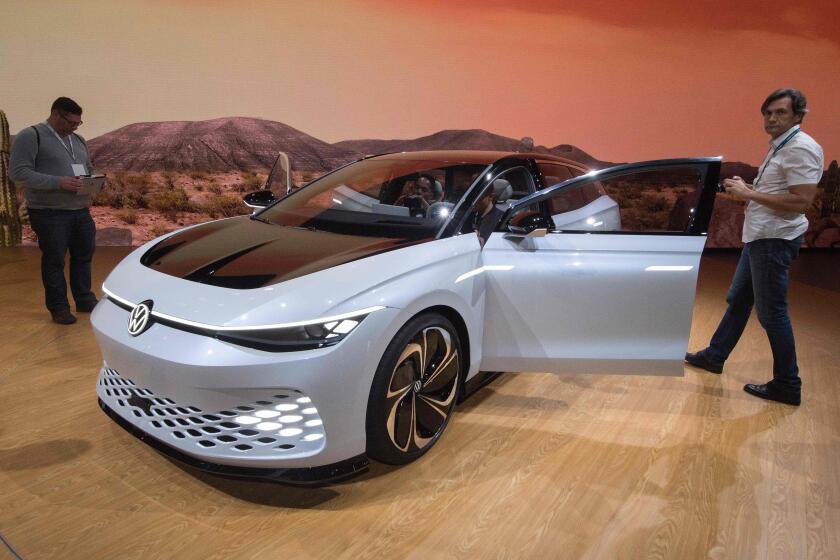Car buyers shun electric vehicles not named Tesla. Are carmakers driving off a cliff?
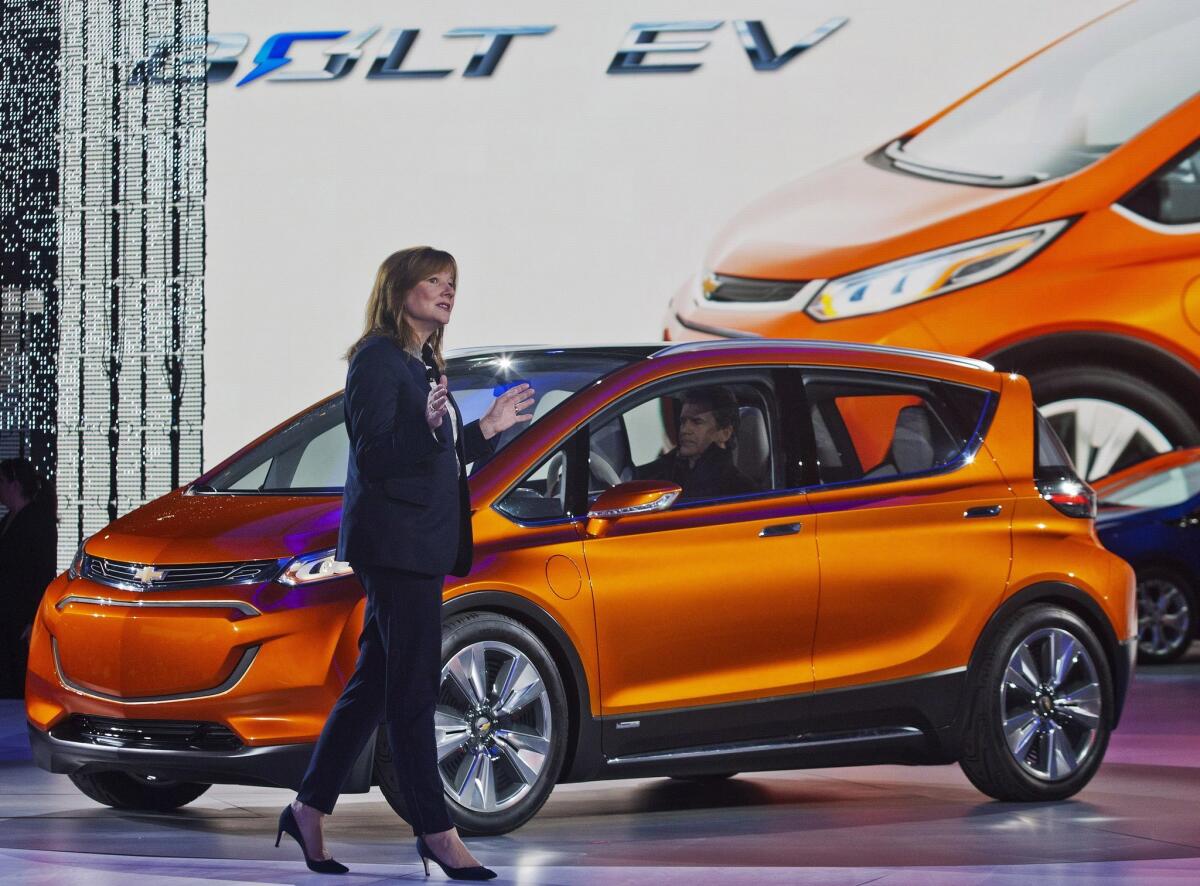
- Share via
Regulators are demanding zero-emission vehicles. And manufacturers are scrambling to provide them, spending billions on electric-car development.
Ford says a third of its vehicles will be electric by 2030. Volkswagen plans to sell a million EVs annually just two years from now. At Volvo, half its offerings will be electric by 2025. By the end of this year, most major automakers will be offering at least one EV.
For the record:
8:41 a.m. Jan. 17, 2020The original version of this article misstated sales of the Hyundai Kona and Toyota Prius plug-in hybrid. Viktor Irle’s name was misspelled.
And buyers? So far, they’re not on board — especially those in the United States.
Despite the debut of 45 pure electric and plug-in hybrids in the United States last year, only 325,000 plug-in passenger vehicles were sold, down 6.8% from 349,000 in 2018, according to Edmunds. That is just 2% of the 17 million vehicles of all types sold in the United States in 2019. Numbers for California aren’t available yet, but 112,961 EVs were sold in the first three quarters of 2019, up only 5.6% from the year-earlier period.
“The number of battery-electric models available more than doubled last year, but EV sales didn’t budge much. That’s troubling,” said Mark Wakefield, who runs the automotive practice at consulting firm AlixPartners.
Troubling, because while carmakers finally turned serious about electric vehicles, going all in on new electric versions of best-selling SUVs, pickups and muscle cars — consumers so far aren’t playing along. That puts hundreds of billions of capital investment at risk.
Why the disconnect? “Manufacturers all over the world are trying to answer that question,” said Eric Ibara, market analyst at Kelley Blue Book. There are several explanations:
- Range anxiety. Pure-electric cars generally get between 200 and 300 miles of range on a full charge, but charging stations are still relatively rare. Plug-in hybrids, which match shorter electric range with a gasoline engine, are meant to relieve range anxiety. But providing two energy sources is expensive and plug-in hybrids haven’t been selling well.
- Cost. EVs cost thousands more than comparable conventional models. And U.S. subsidies are ending for some models, worsening the situation.
- Style. Tesla created an EV lifestyle brand. Everyone else is still trying to figure out whether buyers want electric versions of standard designs or something entirely new.
- Gas prices. The price at the pump has been relatively stable for many years, making the day-to-day savings that come with EVs less compelling than in times of fast-rising fuel costs.
A growing number of carmakers will arrive at the L.A. Auto Show with battery powered or plug-in hybrid SUVS and crossover utility vehicles.
EV weakness wasn’t confined to the United States. Sales of “new energy vehicles,” most of which are electric, declined 4% in China last year, to 1.2 million vehicles. (That was less of a drop than China’s overall auto market, which fell 8.2% to 25.8 million vehicles, according to the China Assn. of Automobile Manufacturers.) The EV hit was blamed mainly on severe cuts in consumer subsidies that kicked in last June.
European sales for 2019 are not yet final, though they, too, are expected to be disappointing. This year should be far better, said Viktor Irle of EV Volumes, a market research firm based in Sweden, as strict greenhouse gas emissions rules phase in, with severe financial penalties for automakers that don’t meet government goals.
The financial damage from EV overreach could be severe. Global automakers will spend $225 billion on EV development between now and 2023, according to AlixPartners. But with overall auto sales falling in China, Europe and the United States, automakers face a “profit desert” for several years — or longer, if customers don’t come around.
The numbers in the United States look especially grim. Tesla remains the exception. U.S. sales of the Model 3 grew by 14% in 2019, to 159,000, according to InsideEVs. Global Model 3 deliveries more than doubled, to 300,600, with a big push in Europe.
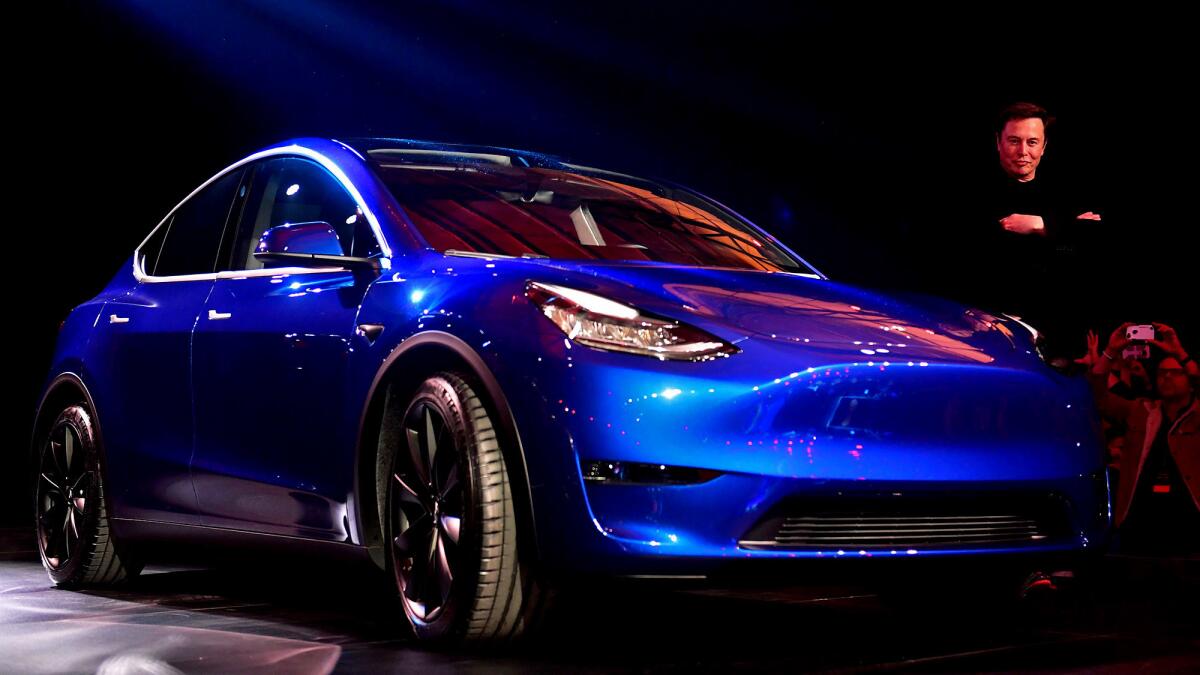
That helps explain why Tesla’s stock price has rocketed $100, or about 25%, since the start of the year. Tesla still struggles to make a profit, with losses every year since the stock went public in 2010. And deliveries of its older Model S and Model X luxury cars are down three years running, with a precipitous 33% decline in 2019, to 66,600. But the Model 3 was once again the best-selling compact luxury car model from any automaker — remarkable considering the small share of EVs in total car sales.
The No. 2-selling EV was the Toyota Prius Prime plug-in hybrid, at 23,630 cars — and its sales fell 14% from 2018, InsideEVs said. Chevrolet’s pure-EV entry, the Bolt, was down 9%, to 16,418 cars. Nissan’s Leaf, despite a 2019 upgrade to a more attractive body style and a boost in range to 226 miles, saw sales tumble 16%, to 12,365.
Those cars were widely considered “compliance” vehicles, built to please regulators and lose as little money as possible. And it didn’t help that small cars of all engine types have plunged in popularity in favor of SUVs and trucks.
But even luxury EVs, including SUVs, fared poorly in 2019.
The Jaguar I-Pace compact SUV, which drew heavy media attention and raves for styling, driving characteristics and range in the automotive media, was a dud in the market, selling only 2,594 cars at a base price before incentives of $70,000. The $75,000 Audi E-tron SUV, with a range barely over 200 miles, registered only 5,369 sales.
“It’s kind of astonishing how disappointing all those offerings have been,” said Joe Osha, equity analyst at JMP Securities.
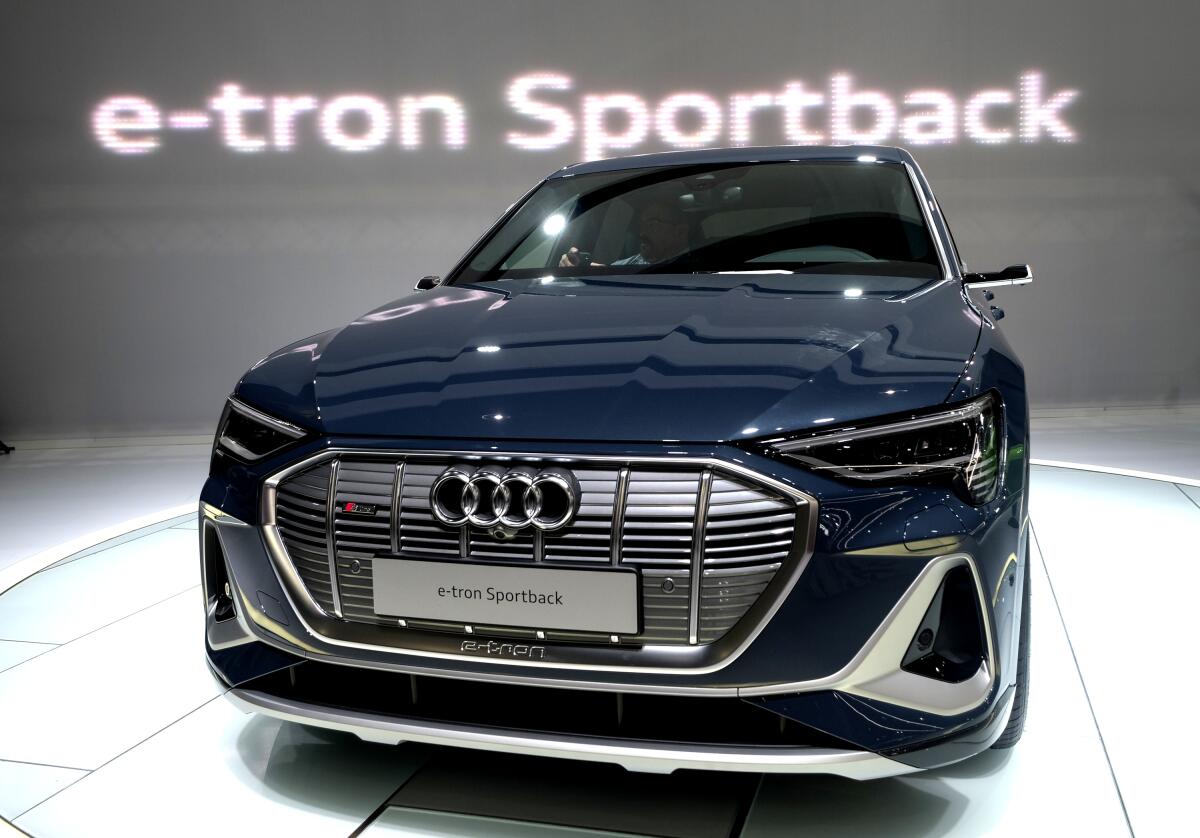
After Jaguar and Audi’s poor showing, Mercedes-Benz said in December that its early 2020 U.S. launch of the new EQC all-electric compact SUV would be delayed at least until 2021. With a $69,000 base price and an approximate range of 280 miles, the EQC was to be Mercedes’ first all-electric to sell in the United States.
Two Korean EVs, the Hyundai Kona and the Kia Niro, hit U.S. showrooms last year, to enthusiastic reviews. A total of 3,600 Konas sold in 2019; Niro, arriving late in the year, sold fewer than 1,000 cars. The companies hope they’ll gain traction in 2020.
Tesla was expected to suffer as new EV competition came online, but that’s not been the case. Some analysts think buyers don’t necessarily want an electric car when they buy a Tesla — they primarily want a Tesla, which has replaced the latest iPhone as the coolest accoutrement in Silicon Valley and similar cultural enclaves around the world.
The Model 3’s Autopilot and other self-drive options, while controversial with safety experts, have proved popular among Tesla buyers. The company also offers a nationwide network of charging stations.

That question of range anxiety — the fear of getting stuck with an empty battery — and lack of public chargers repeatedly surfaces in surveys about customer attitudes toward EVs, even as ranges of 250 miles or more per charge have become common. As of mid-2019, there were 20,000 charging stations with 70,000 charge points around the United States up from 16,000 and 43,000 in 2017. About a third of those are in California. That pales when compared with the proliferation of gas stations across the United States, though, estimated at 150,000 by the National Assn. of Convenience Stores.
More charging stations are on the way. But charging companies have been vague about expansion plans as they monitor consumer uptake of electric cars. The International Council on Clean Transportation said 103,000 more public charging stations will be needed by 2025, assuming 3 million electric cars are on U.S. roads, compared with 1.2 million today.
Consumers are still wary of being stuck without juice or are unwilling to wait 20 minutes or more for a quick charge, said Kelley Blue Book’s Ibara. “They are going to be making the second-largest purchase in their lifetime and may be hesitant to buy into new technology they’re not sure will work for them.”
Dealer enthusiasm, or the lack of it, continues to be an issue. A Sierra Club secret shopper survey of 909 dealerships around the U.S. released in November found that 74% weren’t selling EVs at all. Servicing cars is more profitable than selling new cars at most dealerships, and EVs require a lot less maintenance than combustion engines So, EV proponents say, there’s less incentive for dealers to sell EVs.
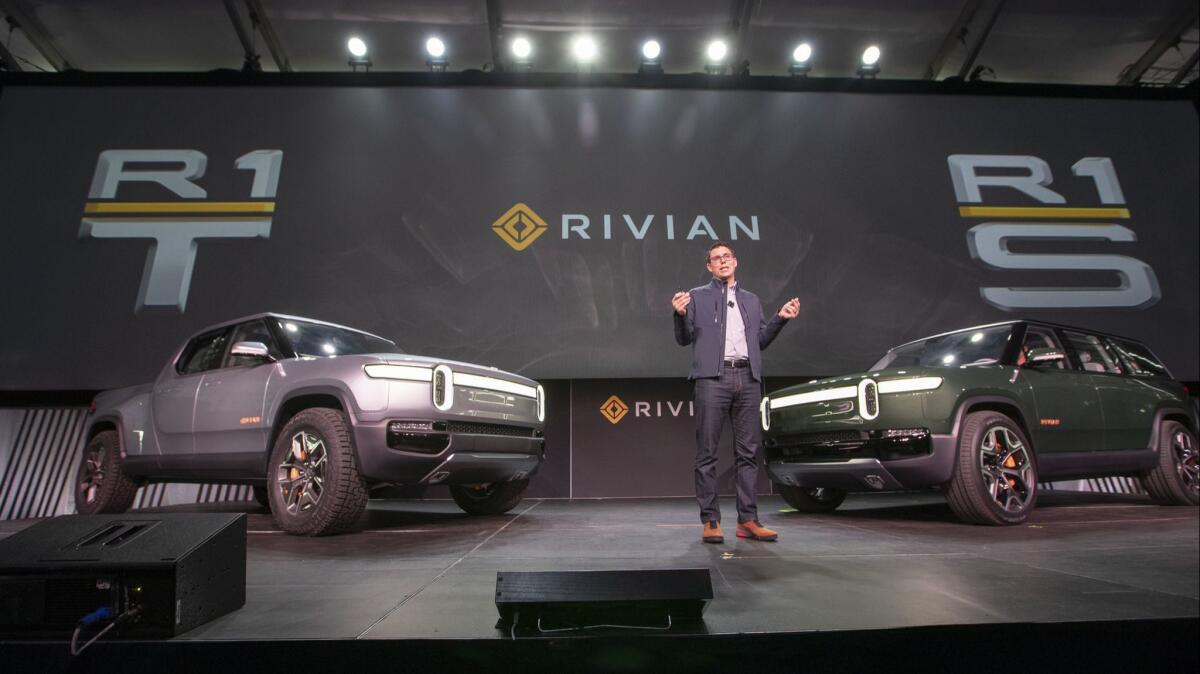
In its report, the Sierra Club also noted that dealer attitudes toward selling EVs ranged from uncooperative to warm and welcoming.
Dealers in California, under zero-emission mandates from the state, are reporting greater buyer interest in EVs. But dealers aren’t on the hook if the mandates aren’t met. The manufacturers are, and if they fall short, they have to buy emissions credits from companies that hold a surplus. Right now, that’s mostly Tesla.
(Fourteen other states follow California’s emission mandates, although the Trump administration is seeking to bust up California’s right to enforce stricter standards than the federal government.)
“Not all dealers are loath to sell EVs, but for many it is a more arduous process,” said Jessica Caldwell, market analyst at Edmunds. “Consumers are likely to have more questions not only about the technology, but on financial matters, like how federal tax credits work. For car dealers, time is money, so anything slowing down the process isn’t perceived favorably.”
Trump wants to dump Obama-era emissions regulations. Auto industry seeks regulatory certainty to guide future investment.
It’s not surprising that dealer enthusiasm varies according to geography, said Scott Keogh, head of Volkswagen’s North America operations. In an interview with The Times at November’s L.A. Auto Show, he said suburban buyers are more likely to shop for EVs. Fewer urban customers have garages to install overnight chargers, he said, and range is a serious concern in rural areas.
Volkswagen has made perhaps the industry’s most serious commitment to EVs in the wake of the diesel emissions cheating scandal. It plans to launch three all-electric models in the United States over the next three years, including a crossover SUV by the end of next year and an electric take on the vaunted VW microbus in 2022. The company is investing in dealer training, and despite a risk to maintenance revenues, Keogh said dealers can still make good money.
Like any car sale, “it’s instant cash flow,” he said. “And the [profit] margins from a dealer perspective are going to be quite good” on EVs that appeal to customers. Or so he’s telling VW franchisees.
Price remains a serious issue. An AlixPartners consumer survey last summer showed that 41% of Americans cited cost as a top-three concern about buying an electric car, up from 29% the previous year. Even with federal rebates up to $7,500, and additional rebates from states, including California and, just this month, New Jersey, EV purchase prices remain well above those of similar internal-combustion cars.
The Hyundai Kona, for example, comes in a gasoline version and an all-electric version. The gas car’s base price is $20,100. The electric version starts at $36,900. And even those who want the EV are finding few to none in stock on dealer lots.
It costs manufacturers more to produce an electric car. Battery cost is the main reason. Internal combustion powertrains cost automakers an average $6,500 per car, according to AlixPartners; the average for an EV is $16,000. Battery pack prices are declining, the firm said — but at a rate of 4% a year. It will take a major development in battery technology to cause battery prices to plunge. In the meantime, EVs are money-losers for all major automakers, including Tesla.
As the market grows, economies of scale will help bring the cost down. But beyond the Model 3, EVs aren’t scaling quickly. Wakefield predicts global EV sales per model will average 14,000 in 2022, versus about 90,000 for internal-combustion models.
Continued enthusiasm for EVs among European and Chinese car companies in particular reflects the more aggressive climate-change policies in those countries. “The politicians have been very firm that they want to move away from petrol and move toward electric vehicles,” said Irle of EV Volumes.
But carmakers are plowing ahead with EV expansion in the United States as well, betting that the trick is to connect Americans’ love of larger vehicles with electrification.
“In the U.S., we expect no fewer than 25 new EV models to debut in 2020 — 16 battery-powered EVs and nine plug-in hybrids,” said Garrett Nelson of CFRA research. Nearly two thirds of those, he said, will be SUVs or crossovers.
Those include the Tesla Model Y compact SUV, the Volvo XC40 compact SUV, and the Polestar 2 compact SUV. (Polestar is an all-EV arm of Volvo.) Toyota’s RAV-4 compact SUV, the best selling non-truck in the United States with 448,000 sold in 2019, gets a plug-in hybrid version this summer.
Ford’s new Mustang Mach E crossover electric car, and an all-electric high-end pickup truck and a similar SUV from American startup Rivian, are creating excitement at auto shows around the world. Both are scheduled to go on sale by year’s end. Porsche started selling its Taycan all-electric sports car in California last December.
Perhaps the best indication of how all-in automakers are on EVs is their plan to launch all-electric versions of gas guzzlers. Ford plans an electric version of its F-150 pickup truck — the best-selling vehicle in the United States for years — in 2021. And General Motors has said it will sell an electric version of the discontinued Hummer in 2022 under the GMC brand.
“Maybe those will light the flame,” said JMP’s Osha.
More to Read
Inside the business of entertainment
The Wide Shot brings you news, analysis and insights on everything from streaming wars to production — and what it all means for the future.
You may occasionally receive promotional content from the Los Angeles Times.
